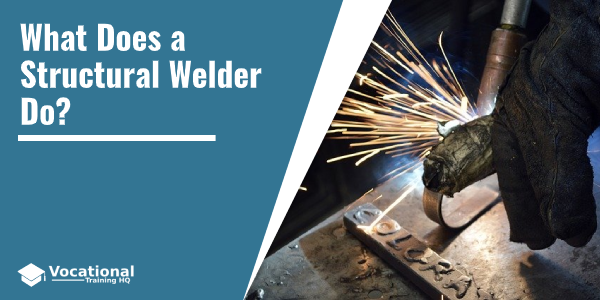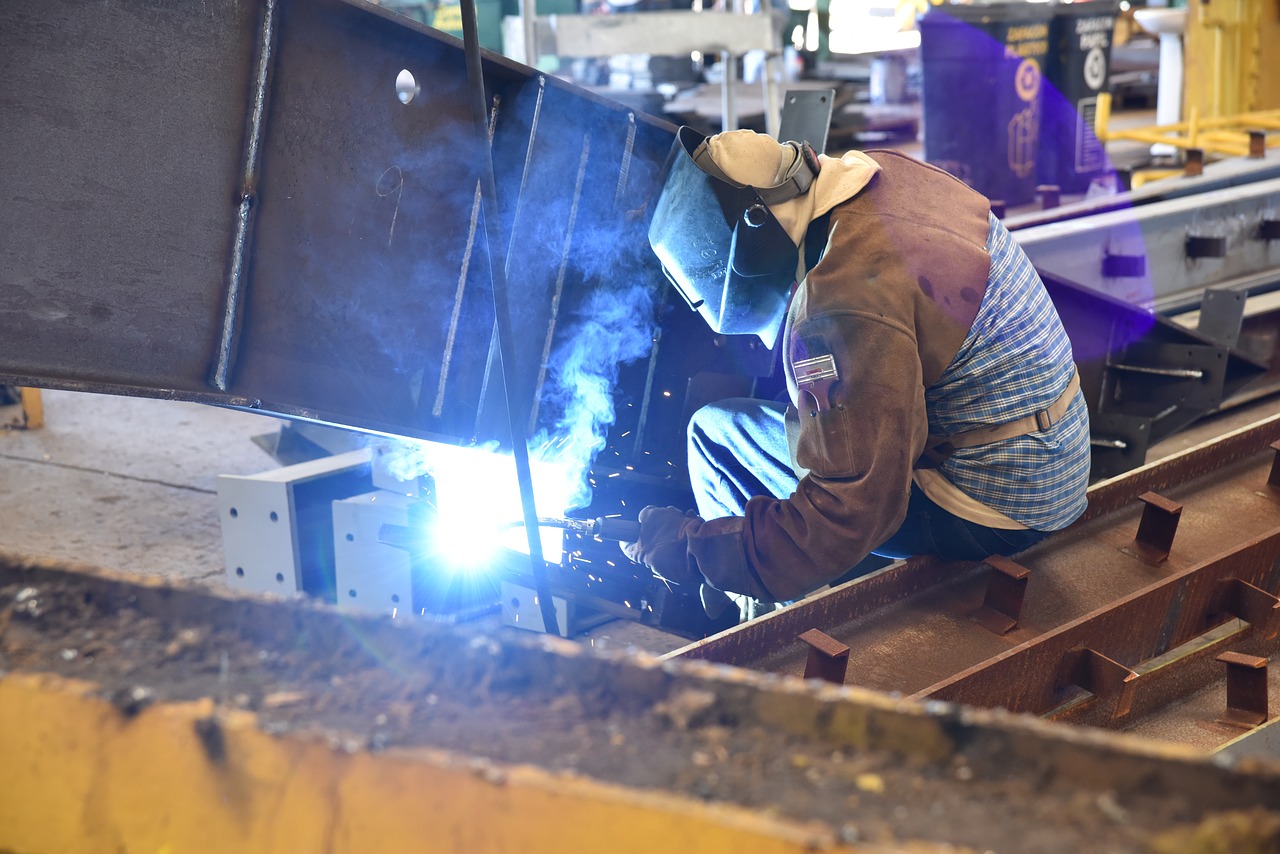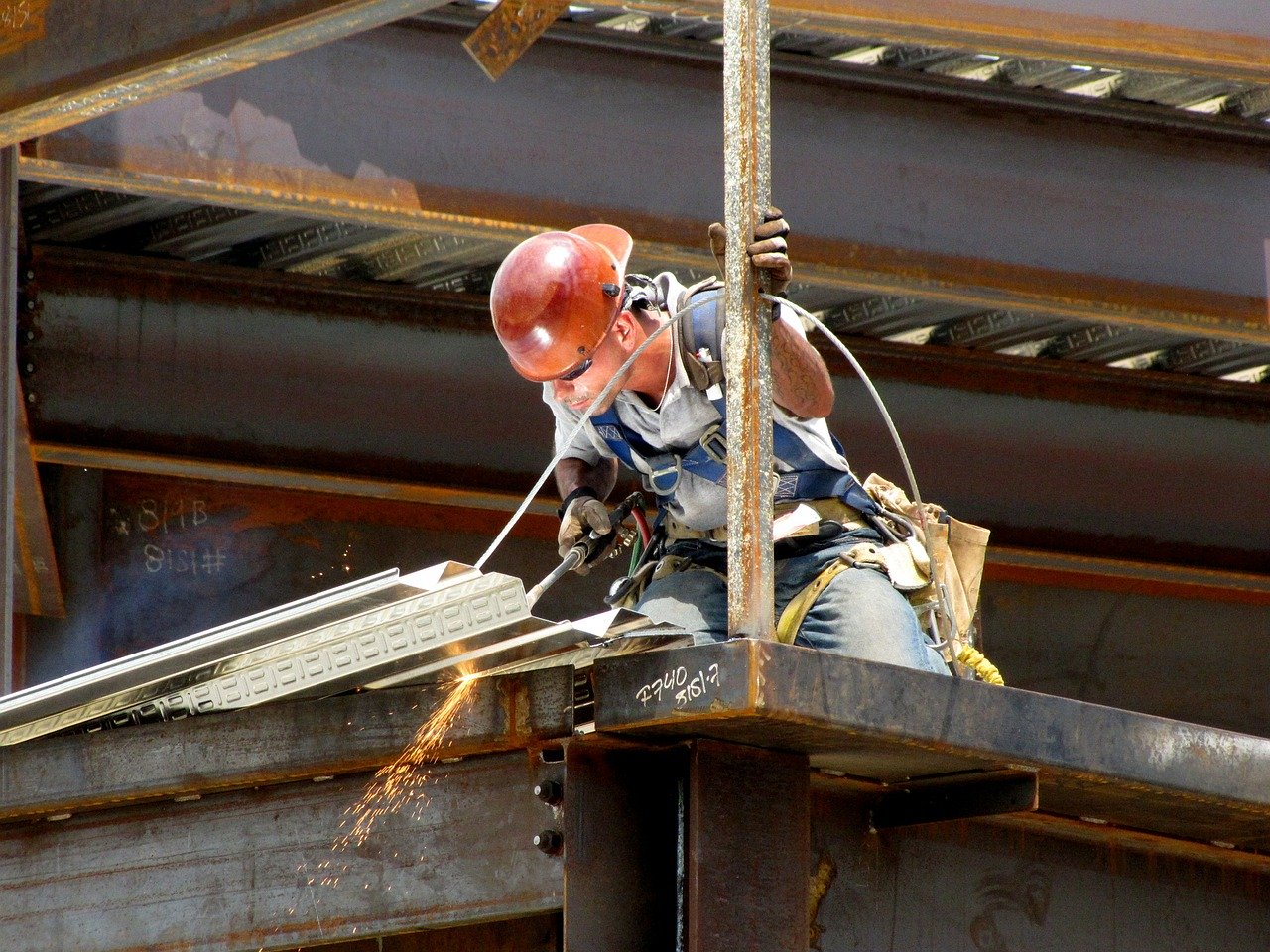
Structural welders create metal frameworks for bridges and buildings, cut and repair columns, beams, and girders.
They are employed by construction companies, shipbuilders, manufacturers, mining, oil and gas companies, as well as the aerospace industry.
Below, you will find an overview of the skills and qualifications necessary for the career of a structural welder.
Article Table of Contents
Educational Requirements
There are no specific requirements, but employers choose welders with formal technical training.
You can learn valuable skills, such as chemistry, blueprint reading, metallurgy, mechanical drawing, and shop mathematics from an accredited trade school.
Even if you took a welding program, employers may still provide some on-the-job training.

Required Skills
For any welding project, you should know how to read and interpret blueprints, use cutting and hand tools, and understand spatial and math relations of objects.
Structural welding can be dangerous, so safety is vital.
While working at a considerable height, it is essential to wear a harness and other safety gear.
Attention to what you are doing is essential.
You should never take anything for granted and must follow safety protocols at all times.
Welders also need to be in good health and have physical stamina.
They move heavy beams, welding equipment, as well as stoop, bend, and reach in the process of their work.
You may have to work outside in harsh weather and in an awkward position.
Good hand-eye coordination is essential as well, but practice makes perfect.
Practice doesn’t have to be costly, you can order find a cheap welding rig and get to work as long as you have a safe area to do so.
Job Duties

The responsibilities can vary, but the basic duties of a structural welder are common for multiple industries.
At the beginning of a working day, welders are most likely to test welding and safety equipment to make sure everything is in good operable condition.
They also have to read specifications and blueprints and collect the tools required to complete the project.
The tools may include welding torches, hand tools, jigs, etc.
All this should be done before the welding starts.
After finishing the welding, you may have to clean, buff, grind or polish the area.
Extra heat treatment may be required as well.
The welds will always be inspected by the supervisor to ensure there are no errors.
However, structural welders should thoroughly check their work themselves for any defects or other issues before the inspector comes over.
Job Outlook
The skills of welders can be applied in a variety of industries, and with the shortage of labor in the skilled trades, the job outlook is positive.
As the infrastructure ages, more jobs for welders become available.
However, you should keep in mind that job opportunities in the structural welding area, like in other types, may depend on the updated training of the employees and whether they are willing to relocate.
Read the full guide: How to Become a Certified Welder